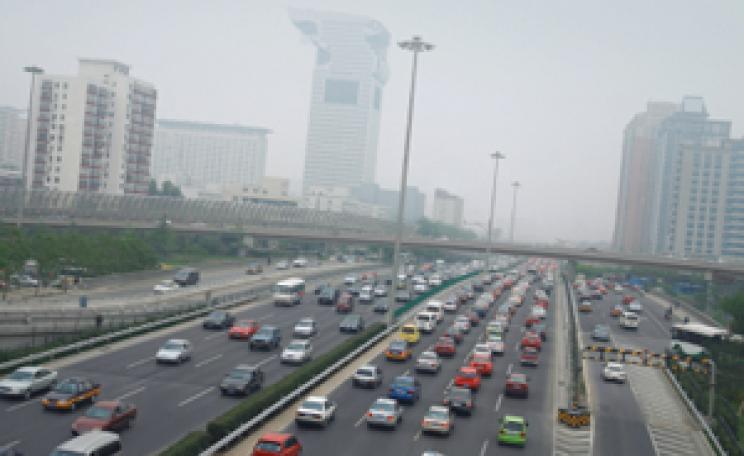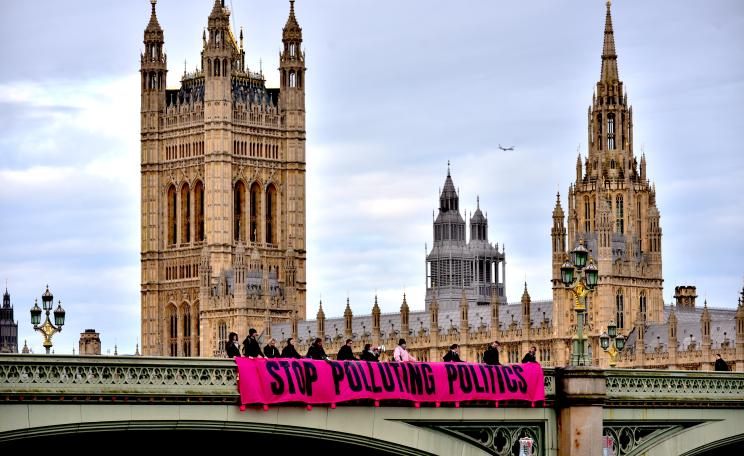The thick, toxic smog that descended over Beijing in the first week of December last year was nothing new. Residents of the Chinese capital have long been used to grounded flights, sore throats and skyscrapers shrouded in a dirty haze. But when freelance journalist, Meng Si, woke in the middle of the night to find her boyfriend ordering “PM2.5 resistant” face-masks online, she knew something was different.
“During that time, PM 2.5 was the hottest topic on Weibo [Chinese Twitter],” she says. “Widespread public campaigns on the environment are very rare in China – this one has been the biggest and most intense so far.”
PM 2.5 is shorthand for particulate matter measuring 2.5 microns or less in diameter, a pollutant that’s fine enough to penetrate human lung and blood tissue and which, it is alleged, can cause asthma, heart disease and cancer. In the final months of 2011, this ‘teccie’ slogan became a rallying point for Chinese urbanites fed up with not just poor air quality, but also fudged government statistics that excluded data on fine particulates and ozone which then allows it to class most days in the notoriously smoggy capital as “Blue Sky Days”.
The culmination was a mass, online protest that directly impacted air pollution policy and has been hailed by many as a breakthrough for public environmental participation in China.
At the heart of the struggle was a widespread lack of confidence in official data. Every year since public reporting began in 1998, the Beijing government has claimed to have achieved its target of upping the number of “blue sky days” (days when an index of pollutants including sulphur dioxide and nitrogen oxide is under 100). In 2009, the number was 285; the following year it climbed to 286. But a popular visual diary kept by two young Beijingers suggested the real number was closer to 180. People began to complain about having been “blue-skied”.
“Ordinary people can feel that the air is bad, and see that the sky isn’t blue,” says Meng Si. “When you see that gap for youself, it’s easy to feel disgusted that the government is treating us like idiots.”
That gap became even more obvious and tangible thanks to an independent air-quality monitoring station atop the US embassy. Set up initially for the benefit of the embassy’s own staff, a twitter feed releasing hourly PM2.5 data – and painting a markedly bleaker picture than the government’s own figures – became an internet sensation.
Armed with these new numbers, millions took to the country’s microblogging platforms to express their outrage: “We firmly demand that Beijing’s environmental protection administration starts publishing PM 2.5 levels in 2012! Otherwise provide all Beijingers, including the transient population, with gas masks!” demanded one NGO worker, named Guo Xia. And in an online poll started by well-known property developer Pan Shiyi, tens of thousands called for the government to release more accurate measurements.
It has been a campaign with teeth. By January, Beijing had started releasing trial PM2.5 data from one monitoring station (though notably on the other side of town from the US embassy, making it impossible to directly compare outputs from the two). Then, in March of this year, the State Council – China’s highest administrative body – announced revised national air quality rules.
As well as mandatory PM2.5 and ozone measurements, standards will now be tightened to be more in line with World Health Organisation levels. Beijing will adopt the new regime this year, along with 27 provincial capitals and three key industrial regions. Another 113 cities must follow suit next year and all but the smallest cities by 2015. Meanwhile, Beijing’s environmental authorities appear to have dropped the term “blue sky day” altogether from their updates.
For a short campaign, it’s a big result, and has been celebrated by environmentalists as proof the public can directly influence environmental policy in China, just as in other countries. More surprisingly, the authoritarian government has now acknowledged the role of public pressure in prompting the changes: announcing the new regulations, state media agency Xinhua praised the “stirring campaign” played out on social network websites, which had, it reported, gained a “satisfying response” from policymakers.
Ma Jun, director of the Institute for Public & Environmental Affairs, is China’s leading voice on environmental transparency. The activist, who this month won the Goldman Environmental Prize for his pioneering work mapping pollution violations in China, believes the victory is a “great milestone”.
“This very vocal expression of public opinion helped to overcome this barrier against environmental transparency in China – helped the government to overcome its own barrier and change its original position. It’s quite an amazing example,” he said.
But not everyone is convinced this is a great triumph for the people. Steven Andrews, a Beijing-based consultant whose analysis of US embassy Twitter data published on chinadialogue helped fuel last year’s surge of online activism, is sceptical that statistics alone will lead to cleaner air. “The real question is about enforcement,” he says. “Will this data prompt local officials to crack down on the sources of pollution?” The failure to enforce even simple laws – such as getting construction sites (thought to be responsible for around 16% of Beijing’s air pollution) to cover their dust piles - does not fill him with optimism.
Andrews also points out that access to data is not the same as access to reliable data. He flags up a recent study, published in Environmental Health Perspectives, where scientists in the western city of Xi’an independently measured PM2.5 levels over a two year period. Their numbers were 50% higher than government-recorded levels of PM10 – the coarser particulates which, by definition, are more plentiful than PM2.5. (PM2.5 is a component of PM10).
Many members of the public share his views. “I wish I could be more confident about the reliability of PM2.5 data,” says Qi Te, a 24-year-old postgraduate student at Peking University. “But it’s part of our education here – definitely not from the textbook – that you need to be extremely careful with official statistics in order to be an aware citizen.”
There may be other reasons for caution. Recent history shows progress strengthening the public voice in China is not always linear. Hopes were raised in the early 2000s when the country’s first public environmental hearing prompted the cancellation of a controversial project at Beijing’s Old Summer Palace lake and NGOs defeated plans for a network of dams in the south-west. But no such influential hearings have taken place in the seven years since and the dam programme now looks set to start again.
Meanwhile, efforts to control the internet continue unabated. Most recently, China’s two most popular microblogs Sina Weibo and Tencent QQ temporarily blocked users from posting comments in an attempt to stem discussion about the downfall of powerful official Bo Xilai.
But for Ma Jun, none of this makes winning access to pollution data an empty victory. It is, he says, a crucial step for building a system of public supervision in which citizens can hold polluters to account: “There used to be some argument that if we can’t overcome this problem easily, then why should we waste our resources doing the monitoring and the disclosure? But to me, you’re never going to mobilise people to take action unless you give them information.”
Olivia Boyd is managing editor of chinadialogue




